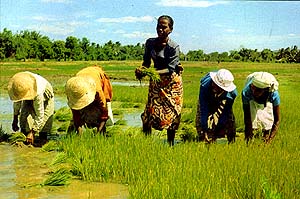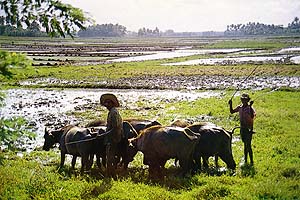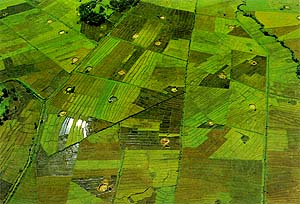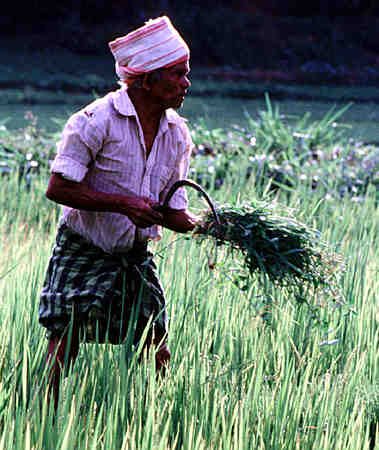
|
||||
|
Climate Variability and Rice Production in Sri Lanka
Rice is the staple food in Sri Lanka and it is cultivated by farmers on a small-scale in the rural regions principally in the Northern and Eastern plains. Rice production is acutely dependent on rainfall and farmers use traditional techniques such as the sighting of the migrant Grey Wagtail bird to anticipate rain. The principal cultivation season, known as "Maha", is from October to March. During this season, there is usually enough water to sustain the cultivation of all rice fields. The subsidiary cultivation season, known as "Yala", is from April to September. Usually there is only enough water for cultivation of half of the land extent during Yala. The sowing dates and duration of cultivation shows regional variability within the island reflecting adaptation to regional climatic variability. There has been a steady increase in rice production in Sri Lanka from 1940 to 1990 leading to near self-sufficiency in feeding the population of 19 million. This rise has been attributed to increased area under cultivation, increased irrigation, improved seed varieties, increased fertilizer application and higher purchase prices for rice. However, rainfall variations affects the inter-annual variability of rice productionas distinguished from its long-term trends. It has been two decades that the rainfall variability in Sri Lanka is influenced by the El-Niño-Southern Oscillation (ENSO) phenomena. Recently, we have found a relationship between the Sri Lankan rainfall and Indian Ocean phenomena as well. Our work has shown a clear link between ENSO, rainfall and the production of rice in Sri Lanka. This provides a basis for using ENSO based predictions for policy analysis and formulation (both retrospective and prospective) and agricultural management. In addition, we are now investigating the influence of the Indian Ocean Dipole phenomenon on the production of rice.
References
Links Sri Lanka Department of Agriculture Rice Research
and Development Centre, Sri Lanka Photographs Courtesy of
Siri Gomez |



